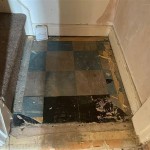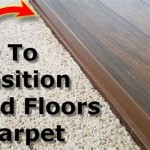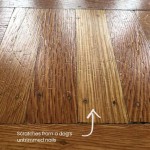Engineered Unfinished Wood Flooring: A Comprehensive Guide
Engineered unfinished wood flooring presents a versatile and customizable solution for a wide range of interior design projects. Unlike prefinished wood flooring, which arrives with its protective coating already applied, unfinished flooring allows for complete control over the final aesthetic, from stain color to sheen level. This open canvas, paired with the inherent stability of engineered construction, makes it a compelling option for both residential and commercial spaces.
This article will explore the construction, advantages, considerations, and installation aspects of engineered unfinished wood flooring, providing a comprehensive understanding of this increasingly popular material. We will delve into the key characteristics that differentiate it from solid hardwood, examine the benefits it offers in terms of customization and stability, discuss the factors to consider when selecting and installing it, and outline the process involved in finishing the floor to achieve the desired look.
Understanding Engineered Wood Flooring Construction
The core distinction between solid hardwood and engineered wood flooring lies in its construction. Solid hardwood consists of a single piece of wood, while engineered wood flooring is composed of multiple layers bonded together. This layered construction provides significant advantages in terms of dimensional stability, making it less susceptible to expansion and contraction due to changes in humidity and temperature.
Typically, engineered wood flooring consists of a top layer, also known as the veneer or wear layer, made of real hardwood. This layer provides the aesthetic appeal of solid hardwood, offering a variety of species, grades, and cuts. The thickness of the veneer layer is a critical factor, as it determines how many times the floor can be sanded and refinished over its lifespan. Thicker veneers generally allow for more sanding and refinishing cycles, extending the floor's longevity.
Beneath the veneer layer lies the core, which is the structural foundation of the engineered plank. The core is typically constructed from multiple layers of plywood, high-density fiberboard (HDF), or softwood. These layers are oriented in different directions to provide strength and stability, resisting warping and cupping. The core's density and composition significantly impact the floor's overall performance and resistance to moisture. Plywood cores are often considered superior due to their strength and moisture resistance, but HDF cores can offer a more cost-effective alternative.
Finally, a backing layer is attached to the bottom of the core to provide additional stability and act as a moisture barrier. This layer helps to prevent moisture from penetrating the floor from below, further reducing the risk of warping or damage. The quality of the backing layer is often overlooked but plays a crucial role in the floor's long-term performance.
The Advantages of Unfinished Engineered Flooring
Choosing unfinished engineered wood flooring presents several distinct advantages over both solid hardwood and prefinished engineered options. Primarily, the ability to customize the finish offers unparalleled design flexibility, allowing homeowners and designers to create truly unique and personalized floors.
Customization is arguably the most significant benefit. Unfinished flooring can be stained any color, from light and airy hues to rich and dark tones, to perfectly complement the surrounding decor. Different sheen levels can also be achieved, ranging from matte to high-gloss, to control the amount of light reflection and create the desired ambiance. Furthermore, applying textured finishes, such as wire-brushing or hand-scraping, can add character and visual interest to the floor, creating a rustic or vintage aesthetic.
The illusion of wider planks is another benefit worth considering. Because the floor is finished on-site, any slight variations in height between planks can be addressed during the sanding and finishing process. This results in a perfectly smooth and level surface, creating the appearance of wider and more expansive planks than might otherwise be achievable.
Moreover, on-site finishing allows for seamless transitions between different rooms or flooring types. The stain and finish can be carefully matched to existing wood flooring or other materials, creating a cohesive and harmonious aesthetic throughout the space. This is particularly useful in older homes where different types of flooring may have been installed over time.
Finally, unfinished flooring can offer a more durable and long-lasting finish than prefinished options. On-site finishing allows for the application of multiple coats of finish, providing a thick and protective layer that is more resistant to scratches, scuffs, and wear. This can significantly extend the lifespan of the floor and reduce the need for frequent refinishing.
Key Considerations Before Installation
Before embarking on an unfinished engineered wood flooring project, several critical factors must be carefully considered to ensure a successful and lasting outcome. These considerations range from assessing the subfloor condition to selecting the appropriate wood species and adhesive.
First and foremost, the subfloor must be thoroughly inspected and prepared. A level, clean, and dry subfloor is essential for proper installation and to prevent issues such as cupping, warping, or squeaking. Any imperfections in the subfloor, such as cracks or unevenness, should be addressed before the flooring is installed. This may involve patching cracks, leveling the surface with self-leveling compound, or even replacing sections of the subfloor.
The moisture content of both the subfloor and the flooring must also be carefully monitored. Excessive moisture can cause the wood to expand and contract, leading to warping and other problems. Moisture meters can be used to measure the moisture content of both materials, and it is crucial to ensure that they are within the recommended range before installation begins. Acclimation is crucial. The unfinished engineered flooring should be allowed to acclimate to the room's humidity and temperature for several days before installation.
Selecting the appropriate wood species is another important consideration. Different wood species have different hardness ratings, grain patterns, and color variations. The choice of wood species will depend on personal preference, the desired aesthetic, and the level of durability required. Harder wood species, such as oak and maple, are more resistant to scratches and dents, while softer wood species, such as pine and fir, may be more prone to damage. Also, consider the thickness of the top veneer layer; a thicker veneer allows for more sanding and refinishing over the lifespan of the floor.
The type of adhesive used to install the flooring is also critical. The adhesive must be compatible with both the subfloor and the flooring material and must provide a strong and durable bond. Different types of adhesives are available, including urethane adhesives, epoxy adhesives, and modified silane polymer adhesives. Each type of adhesive has its own unique properties and advantages, and the best choice will depend on the specific installation conditions.
Finally, it is essential to plan the finishing process carefully. The choice of stain color, sheen level, and type of finish will significantly impact the final appearance of the floor. It is advisable to test different stain colors and finishes on a sample piece of the flooring before applying them to the entire floor. This will allow you to see how the colors and finishes look in the room's lighting and to make any necessary adjustments before committing to the final result. Consider the volatile organic compounds (VOCs) of the chosen finish and opt for low-VOC options to improve indoor air quality.
Proper ventilation is crucial during the finishing process to minimize the inhalation of harmful fumes. Wear appropriate personal protective equipment, such as a respirator and gloves, to protect yourself from exposure to chemicals. Allow the finish to dry completely before allowing foot traffic on the floor.
By carefully considering these factors, homeowners and designers can ensure a successful and long-lasting unfinished engineered wood flooring installation that adds beauty and value to their homes or commercial spaces. The customization options and enhanced dimensional stability offer a compelling combination of aesthetic appeal and practical performance.

Unfinished Engineered Oak Wood Flooring

Unfiished Engineered European Oak Whole Trade

Gorgeous Unfinished Engineered Wide Plank Wood Flooring Reclaimed Or Fsc

Unfinished Engineered Wood Flooring Free Samples Express Delivery Flooring365

Engineered Natural Unfinished Oak Flooring 14mm X 3mm 190mm

7 1 2 X 5 8 European French Oak Unfinished Square Edge Hurst Hardwoods

Engineered Oak Flooring 15 X 189 Unfinished Mixed Grade

Unfinished Hardwood Flooring Builddirect

Unfinished Square Edge Mixed Grade Oak Flooring

Unfinished Engineered Wood Flooring Free Samples Express Delivery Flooring365
Related Posts








